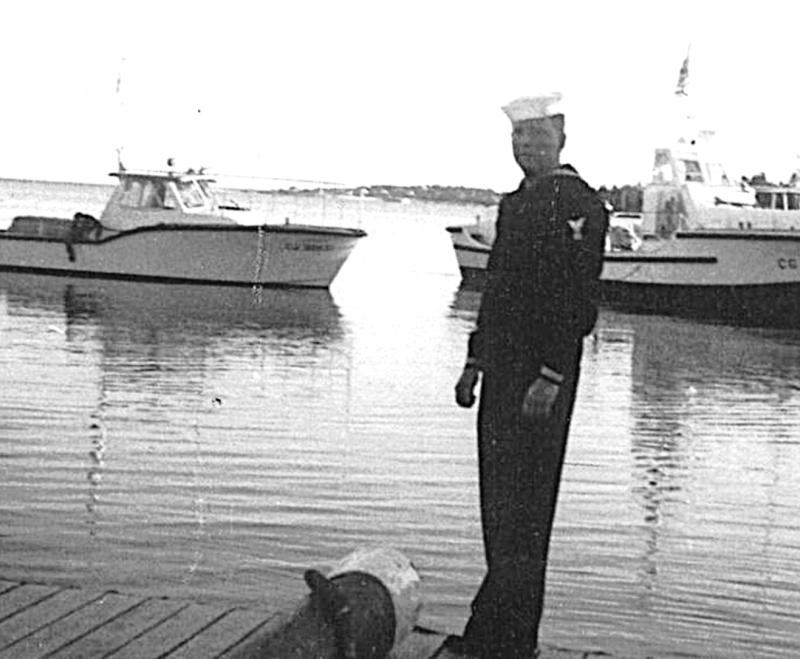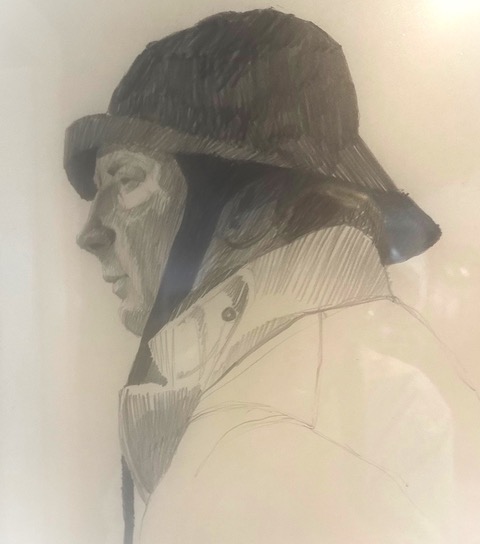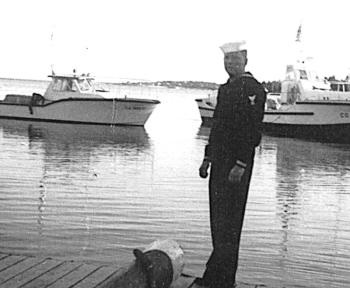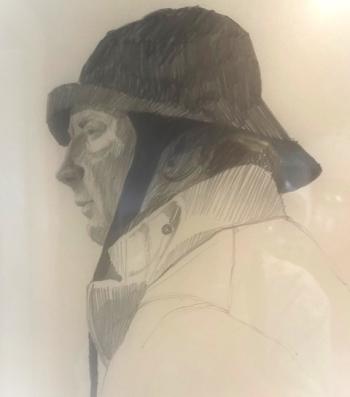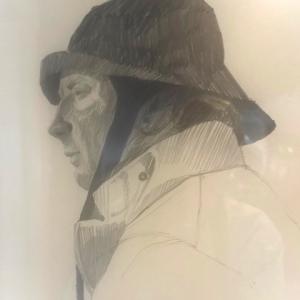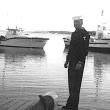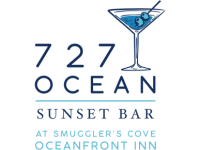Rusty Court USCG
The 2025 Windjammer Days will shine a spotlight on the dedicated individuals who have served, are serving, or are preparing to serve in one of the most respected branches of the U.S. military: the Coast Guard. From active-duty members and retired veterans to the bright future leaders currently enrolled at the U.S. Coast Guard Academy, we’ll explore their personal stories, their contributions to the community, and the impact they've made on the nation's maritime security. The 63rd annual Boothbay Harbor Windjammer Days will take place on Sunday, June 22 through Saturday, June 28. Please visit boothbayharborwindjammerdays.org for the full schedule of events.
Rusty was a summer kid on Monhegan from the age of 2. The Coast Guard was an important part of life on Mohegan due in part to the Coast Guard station on nearby Manana Island. As kids they would go over to the lighthouse on Manana because it was the only place that had electricity and he and his friends could watch cartoons. Also the 40-foot Coast Guard cutter from Burnt Island over by Port Clyde often tied up at Monhegan. It was a search and rescue boat and was of great interest to young Rusty. Due to the fact that he was surrounded by the Coast Guard in the summers, that was his choice when he decided to go into the service after high school.
Rusty entered the Coast Guard on Nov. 1,1961. He was promptly sent to basic training in Cape May, New Jersey for 13 weeks. In his last week of basic training, he was called into the commander’s office and was told to pack his seabags for his first assignment because he was going to Washington, D.C. to be part of President Kennedy’s Honor Guard. His duties included being at all functions when visiting dignitaries arrived at Washington National. Also to attend all wreath laying ceremonies at Arlington National Cemetery as well as some duties at the Pentagon.
His tour of duty ended after 365 days and at that point he got his choice to transfer to any U.S. Coast Guard station in the country if there was an opening. This list included San Diego, San Francisco, Honolulu and other ports, but Rusty asked to come back to Maine, so he was transferred to Portland and put up on the vessel Acushnet, a 125-foot rescue tug. Their duties were to go to St. Georges Bank for two weeks at a time, then return to Portland for another three weeks.. At that time the Russian fishing fleet was fishing in United State’s waters because the 200-mile limit was not in place. While out to sea they asked if anyone was familiar with a specific press camera and Rusty volunteered his services resulting in him becoming the ship’s photographer. He was responsible for filming the Russian ship while it was fishing, towing and going back to the 600-foot mother ship. There were 100 vessels fishing day and night and bringing the fish back to the mother ship where the fish were ground up for fish flour or what is also called fish meal. They were able to get very clear pictures of this activity and the pictures were sent to the Pentagon. Rusty believes that these pictures were instrumental in leading to the 200-mile limit around the United States to keep foreign fishing vessels out of our territory.
As a tugboat, the Acushnet was also responsible for towing missions such as the one where they towed a big vessel from Sable Island off the coast of Nova Scotia back to Portland. At 750 miles long, it was the longest towing mission on record. They also had to tow a helicopter that had ditched on a rescue mission. The crew had to pick up the helicopter and its parts and bring it to Boston. Another memorable mission was when the crew of the Acushnet rescued a tanker that had split in two also up near Sable Island. Rusty was at the helm in 40-foot seas. He describes it as navigating waves the size of large barns in Vermont and hoping that the next one didn’t crash over the boat.
After his two-year stint on the Acushnet, there was scuttlebutt on the boat that there was a transfer in the works for a BM 2 to go to Adak, Alaska. As BM 2 himself, that wasn’t an appealing transfer to Rusty. When he was called to the captain’s stateroom he was told that he was being transferred. He was told to pick up his orders from the captain’s desk and read them. Meanwhile the captain asked Rusty if he liked the cold weather and seals, and by now Rusty was sure that he was going to Alaska. To his surprise, the orders were to go to Boothbay Harbor.
At that time there was no formal Coast Guard station, instead they had a headquarters on Bay Street. They also didn’t have a rescue vessel. Instead they had 36-foot boat that would go nine knots on good day which was tied up at the footbridge. During that last year and a quarter, the Coast Guard station was established in West Boothbay Harbor. They were also issued a brand new 40-foot motor life boat and 30-foot rescue boat.
Rusty remembers a tragic rescue out by Pemaquid Point for a young man who fell off the rocks. His father later visited the Coast Guard station and said that his son had just returned from Vietnam and wanted to go to Maine to surf cast before he fell to his death. Another time they rescued a barge towing a 1790 house from Rockport, Maine to Rockport, Massachusetts when the tugboat lost one of its engines. The crew found the barge in the darkness in high seas and strong northeast winds. An hour later the house slid off the barge. They had to call Coast Guard in Boston for advice. Boston advised that they break up the house with the Coast Guard ship since it was a hazard to navigation. For weeks later there was timber and pieces of the house turning up on Damariscove, Pemaquid and other surrounding areas.
Another rescue involved a sardine boat that had gone ashore on Thrumcap after the captain had fallen asleep. Rusty and his crew went out with the rescue boat and a skiff. Finally, after a break in the waves, Rusty was able to row in to get aside the sardine carrier. That allowed the captain to jump into the skiff, then transfer to the Coast Guard ship and return to land.
Rusty said that he realized his childhood dream of captaining a rescue boat in the Coast Guard. He feels that he did a lot growing up in the Coast Guard and gained a lot of respect for their institutions, especially while being in the President’s Honor Guard. It also taught him a lot of respect for the ocean and its power. His current property now looks out to White Island, Pemaquid and Monhegan, which is a daily reminder of his adventures.

